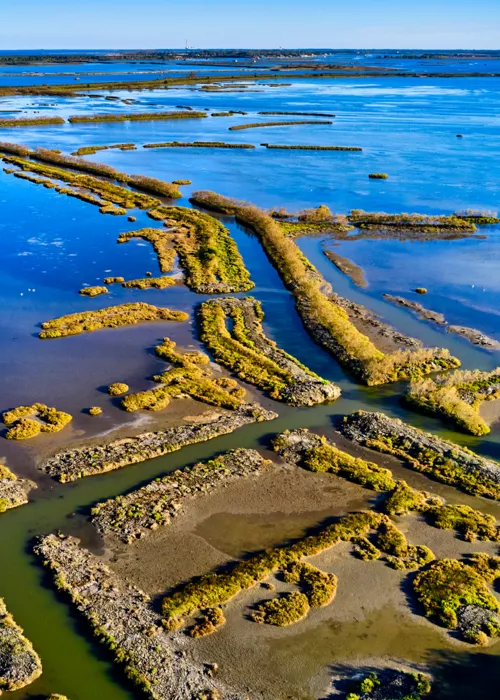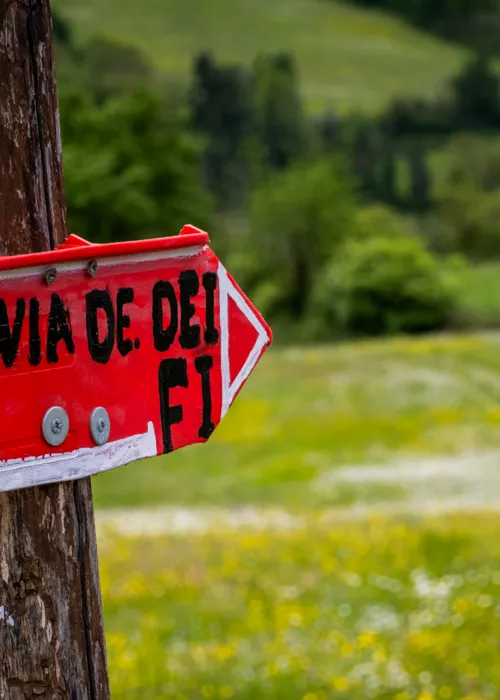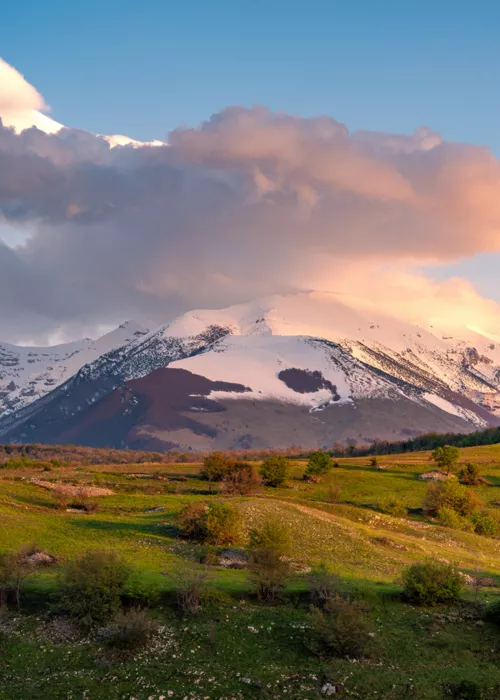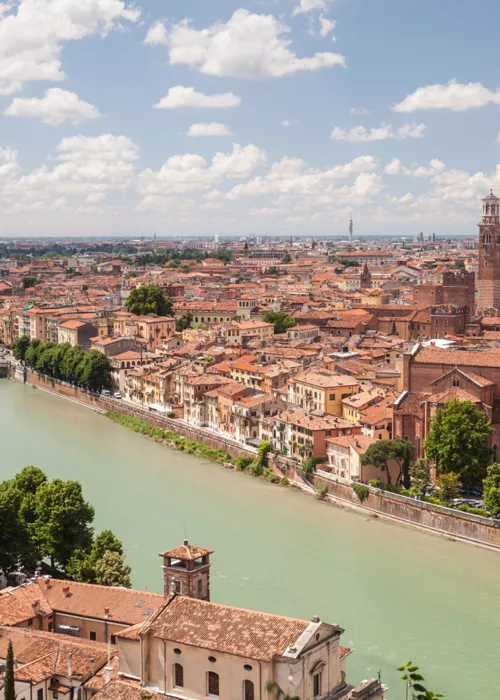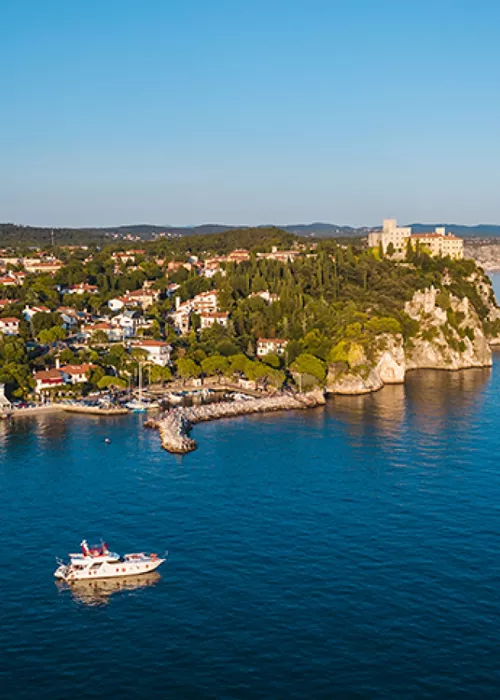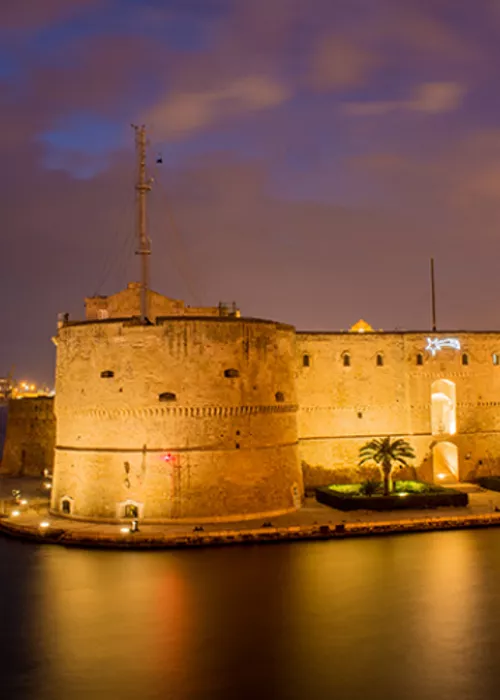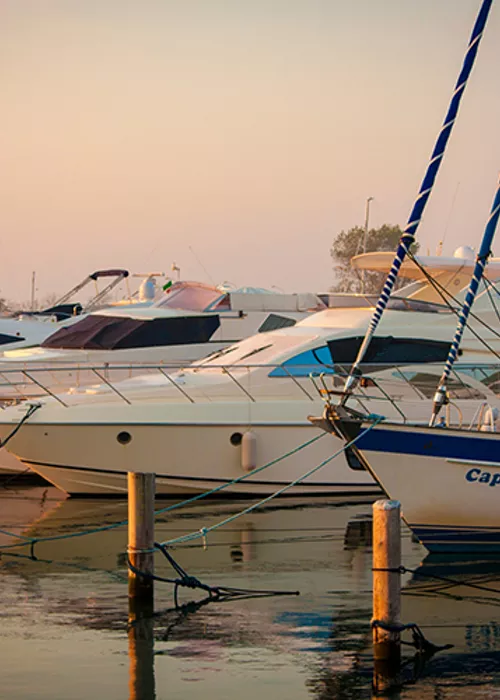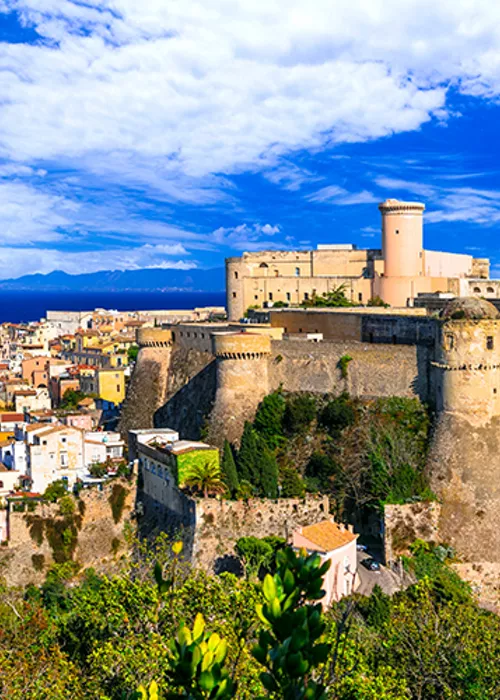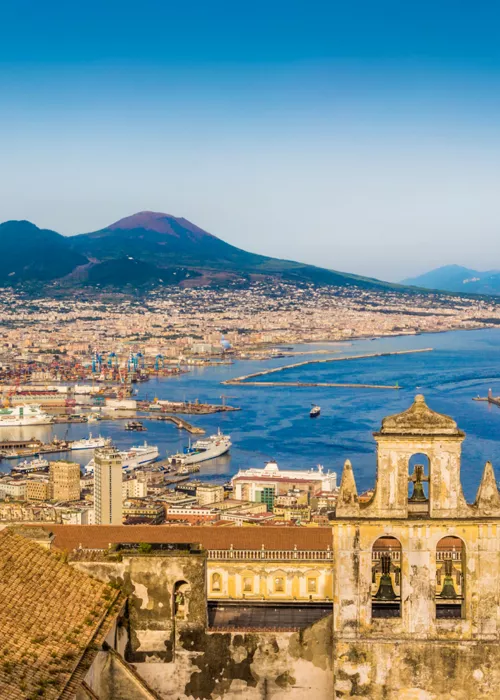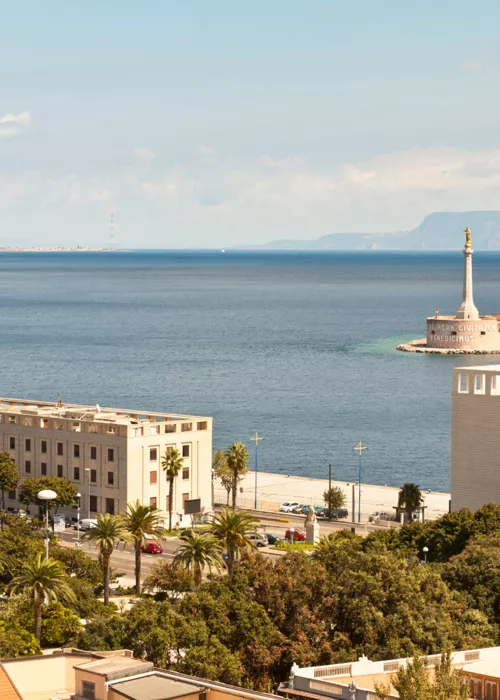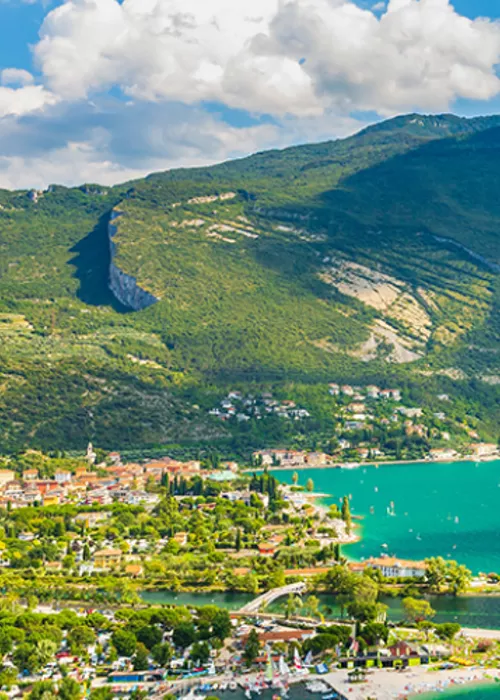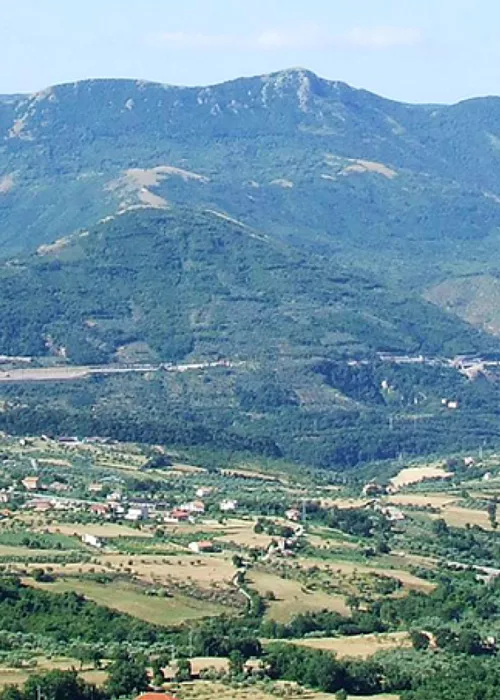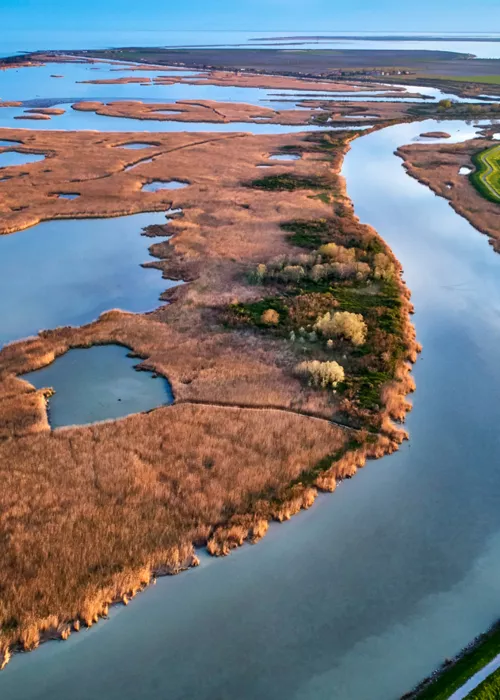Mount Lussari Sanctuary

In 1360, a shepherd from Camporosso, near Tarvisio, found a statuette of the Madonna in a bush at the top of Mount Lussari, at an altitude of just under 1,800 metres, and brought it down to the valley. When he returned to the mountain, however, he found it exactly where he had picked it on the previous occasion, and in the following days, the episode was repeated. The Virgin wished to remain on the mountain, and therefore, the faithful built a small chapel for her, which gradually became a genuine shrine. Today it is the first place of fervent popular devotion to be found on the Italian stretch of the Romea Strata, which from Slovenia enters Italy precisely at Tarvisio, heading towards Venzone and Concordia Sagittaria.
Up to the end of the First World War, however, this was not the case: this land was not part of Italy but a region of the Habsburg Empire. Speaking of Habsburg... Around 1785, Emperor Joseph II, in an impulse of Enlightenment secularism, decided to close the shrine in the hope that it would fall into ruin, but his attempt failed and in fact ended up increasing the devotion of the country folk. The tragedy of the Great War, which in the mountains of Friuli wrought frightful carnage, did not spare even the sanctuary and its small village, which were heavily shelled. The statue of Our Lady, however, was saved, the small church was rebuilt, and with the arrival of peace, it became the destination of the Pilgrimages of the Three Peoples (Italians, Austrians and Yugoslavs, especially Slovenes), with the celebration of Mass in three languages. Even today, worshippers from three different cultures arrive here, rediscovering themselves and their brotherhood with their neighbours by sharing the silence of the mountain and the fatigue of the ascent, along the Way of the Pilgrim. This path is also a notably good hiking route: it rises from the valley floor, namely from Camporosso, near the "Alte Hutte" restaurant, through the thousand-year-old Tarvisio Forest, which is the largest state-owned forest in Italy if you exclude parks (approx. 2 ½ hours, a 950-metre change in altitude and 613 trail signs). Alternatively, for those who cannot manage the path, there is a cable car that ascends from Camporosso.
St. Mark's Basilica in Venice

The Patriarchal Cathedral Basilica of Saint Mark, or more simply St. Mark's Basilica, is the symbol of Venice and the greatest expression of the power and wealth of the Republic of Venice: a masterpiece of architecture and a treasure trove of superlative art, starting with the marvellous mosaics that earned it the nickname "the Church of Gold". First and foremost, however, the basilica is a place of faith. For almost a thousand years, devotees and pilgrims have flocked here, including those travelling on the Romea Strata that passes through nearby Mestre, to pray at the tomb of Saint Mark the Evangelist. The real reason for the construction of this basilica, founded in the 9th century, was the arrival in Venice of the body of the saint, in the year 828. His remains were adventurously stolen from Alexandria, the place of his martyrdom, which had fallen into Muslim hands, by Venetian merchants Buono da Malamocco and Rustico da Torcello. Pending the construction of the basilica, the relics were placed in the Ducal Palace. In the 11th century, during the extension works that gave the basilica its current architectural layout, the saint's body was lost and then miraculously found in a pillar in 1094, the year of the new consecration. The relics were kept in the crypt until 1835, when it was decided to move them to underneath the main altar. The value of St Mark's Basilica in the history of the Church goes beyond the presence of the evangelist's tomb. Here, in 1177, in the presence of Pope Alexander III, a peace treaty was signed between Frederick Barbarossa, the papacy and the Lombard League, as recalled by an engraving in the atrium floor; in 1201, the basilica was the starting point of the Fourth Crusade, led by Doge Enrico Dandolo, which ended with the capture of Constantinople. This great church has been the spiritual heart of Venice in all its most difficult moments, such as in 1576: the plague raged, claiming 50,000 victims (practically the same number of people living in the historic city today), and a vow was made in the Basilica to build the Church of the Redeemer. Returning to more recent times, the 20th century saw three patriarchs of Venice pass from St. Mark's to the throne of Peter: Pius X, who reigned in the very early years of the 20th century, and later John XXIII and John Paul I, born Giuseppe Sarto, Angelo Roncalli and Albino Luciani. The first two have already been proclaimed saints, the third is a Servant of God.
Basilica of Santa Giustina in Padua

Padua is a fundamental stop on the route of the Romea Strata, or more precisely, the Romea Annia: this is the name given to the Veneto section of the Strata, which extends from Concordia Sagittaria to Badia Polesine. For the faithful today, the name of Padua evokes, above all, the figure of St. Anthony, the Franciscan friar who was born in Portugal, died in the city in 1231 and was proclaimed a Doctor of the Church: the Pontifical Basilica of Saint Anthony of Padua is dedicated to him. Centuries before Anthony arrived here, however, Padua was a destination for pilgrims who came to pray to St. Justina and St. Luke, one of the four Evangelists, who also wrote the Acts of the Apostles. To both these saints, the pilgrims who travel the Romea Strata pay tribute in the abbey basilica of Santa Giustina in Prato della Valle, the main square of the city. The basilica was the most majestic in the Republic of Venice and it is still among the largest in Italy. Founded in the 5th century on the burial site of St. Justina Martyr, a powerful Benedictine monastery was later established beside it: rebuilt several times, the last during the 1500s, it was finally consecrated in 1606. The body of St. Luke the Evangelist, which was originally buried in the Church of the Holy Apostles in Constantinople, arrived in Padua in the fourth century (or, according to other sources, in the eighth) along with that of St. Matthias, the apostle who replaced Judas among the Twelve. Originally, the remains of the two saints were placed in the chapel of San Prosdocimo, which belongs to the oldest core of the basilica: San Prosdocimo, the first bishop of Padua, personally consecrated by St. Peter, already rested there. Then the remains of Luke and Matthew were moved to the church, until they were finally placed in the main chapels, located on the opposite sides of the transept. St. Luke is housed in an arch of Pisan-Venetian workmanship from the early 14th century, made of Veronese marble and serpentine with eight panels carved in alabaster. The bones of the skull were subsequently moved elsewhere, but the Evangelist's body has always remained here. Since the 12th–13th centuries, the miraculous icon of the Madonna of Constantinople has kept him company. This too arrived from the capital of the Eastern Empire, where it suffered burns due to iconoclastic fury. It is protected by a precious embossed silver cover and a sixteenth-century repainting.
Abbey of San Silvestro in Nonantola

The stretch of the Romea Strata that crosses Emilia and Tuscany coincides with the Romea Nonantolana Longobarda road, which goes from Badia Polesine, in Veneto, to Fucecchio. It may seem strange that this Roman road is named after Nonantola, a small town near Modena, despite the fact that it passes through much larger cities. The reason is simple: here stands the Abbey of San Silvestro, a monastic centre so ancient, prestigious and rich as to make this town a historic diocesan see. And it remained so until 1986, when the diocese of Nonantola was effectively merged with that of Modena, to become the archdiocese of Modena and Nonantola. The abbey basilica, next to Modena cathedral, is still its co-cathedral.
The foundation of the abbey dates back to the middle of the 8th century and is attributed to St. Anselm, former Lombard Duke of Friuli. Anselm, who had been sent to the Modenese Apennines by King Astolfo, had recently founded the monastery of Fanano when he decided to establish this abbey too: he chose the site of the Roman colony of Nonantula, settled there together with his monks and died in 803, after various hardships. Soon the abbey, which could count on the powerful protection of the king, became rich and influential, and a worthy port of call for pontiffs on their travels. Here in 883, Pope Marinus met Emperor Charles III, also known as Charles the Fat; two years later Adrian III, later proclaimed a saint, was buried there. He probably died in Spilamberto on his way to an imperial diet. The abbey also houses the relics of another, even more illustrious pope and saint: St. Sylvester, who was the first pope of the Church "liberated" from persecution at the time of Constantine. He died on 31 December 335. Tradition has it that his relics, or at least a part of them, were moved here from the Roman catacombs of Santa Priscilla at the behest of the king of the Lombards in the year 756, near the foundation of the abbey. There are many other relics preserved in the abbey, from those of St. Fosca to those of Saints Senesius and Theopompus, martyred at the time of Diocletian. The most precious is probably the Relic of the True Cross donated to the monks of Nonantola probably by Charlemagne or perhaps one of his successors: a piece of wood wrapped in gold foil that measures 29 cm in height, 18 in width and 2 in thickness.
Cathedral of San Zeno, Pistoia

There is a place where the pilgrimage on the Romea Strata intersects, at least in theory, with that to Santiago de Compostela, where Apostle St. James the Greater is buried. That place is the Cathedral of San Zeno in Pistoia, which is not only an important stop on the Romea Nonantolana Longobarda road, but also the church that preserves the only relic of St. James the Greater outside of Spain. It arrived in Pistoia, according to tradition, from Santiago de Compostela around 1145 on the initiative of the bishop Atto or Attone, who was later beatified (his urn is placed in the Church of Saint Roch). To St. James, here known as San Jacopo, the cathedral of San Zeno dedicates a statue on the crest of the façade, a marvellous silver altar, a masterpiece of late Gothic goldsmithing, and a precious reliquary from 1407, the work of Lorenzo Ghiberti. In the days before the feast of St. James, which falls on 25 July, the statue on the façade is covered with a scarlet cloak, a symbol of martyrdom: it is the typical Pistoian rite of the Dressing of Saint Jacopo.
The link with Santiago explains the presence of a Holy Door, opened on the occasion of Jubilees. Right beside the Holy Door, outside the cathedral, a plaque commemorates the Jacobean Jubilee of 2021: in the centre of the Rose of the Winds can be seen the pilgrim's shell, symbol of the Way of St. James. The veneration of the relic is at the origin of an all-Tuscan "minor trail", the Way of San Jacopo (110 km), which runs along the Via Cassia-Clodia between Florence, Prato, Pistoia, Pescia and Lucca.
Collegiate Basilica of Santa Cristina in Bolsena

Since 1263, Bolsena has been, for believers, the city of the Eucharistic Miracle, which took place in the Basilica of Santa Cristina. The main character of the story is Peter of Prague, a Bohemian priest who doubted the presence of Christ in the Eucharist. While Peter was celebrating Mass in the Grotto of Santa Cristina, now the crypt of the basilica, at the moment of consecration, the Host began to bleed; the priest, distraught, wrapped the Host in a linen cloth and rushed to the sacristy, leaving a few drops of blood on the altar steps and the floor. The bloodstained slabs of the Eucharistic Miracle are, today, preserved in the New Chapel of the Miracle, built from 1693 to a design by Tommaso Mattei. From the chapel itself, you can access the grotto. It is a hypogeal church founded as an oratory on the tomb of Santa Cristina and was gradually enlarged by creating other spaces for devotion.
At this point, it should be remembered that that altar had already been site of a miracle. The stone block on the platform, according to tradition, is, in fact, the one that had been tied around the neck of Santa Cristina, who was sentenced to drowning and thrown into a lake because of her faith. The stone had, however, resurfaced; the saint had stood on it, leaving her footprints on it, and returned to shore.
What is often overlooked is that Peter of Prague was a pilgrim who had embarked on the journey to Rome to strengthen his faith. From Prague, he had travelled all the way to the Eternal City, and on his way back, he had stopped, like everyone else, in Bolsena, not to enjoy the delightful little town and the splendid views of its lake but to pay homage to the relics of Santa Cristina. We don't know for sure which road he travelled on his long journey, but in all likelihood he travelled a considerable distance on the Romea Strata. The road, in fact, descending from the Baltic, crosses the present-day Czech Republic and before reaching Tarvisio passes through Brno and Vienna. Once in Fucecchio, Peter certainly took the Via Francigena southwards, walking alongside pilgrims from every nation, united by the desire to pray at the tombs of the Apostles, in the Papal Basilica of St. Paul Outside the Walls and in St. Peter's Basilica in the Vatican.



